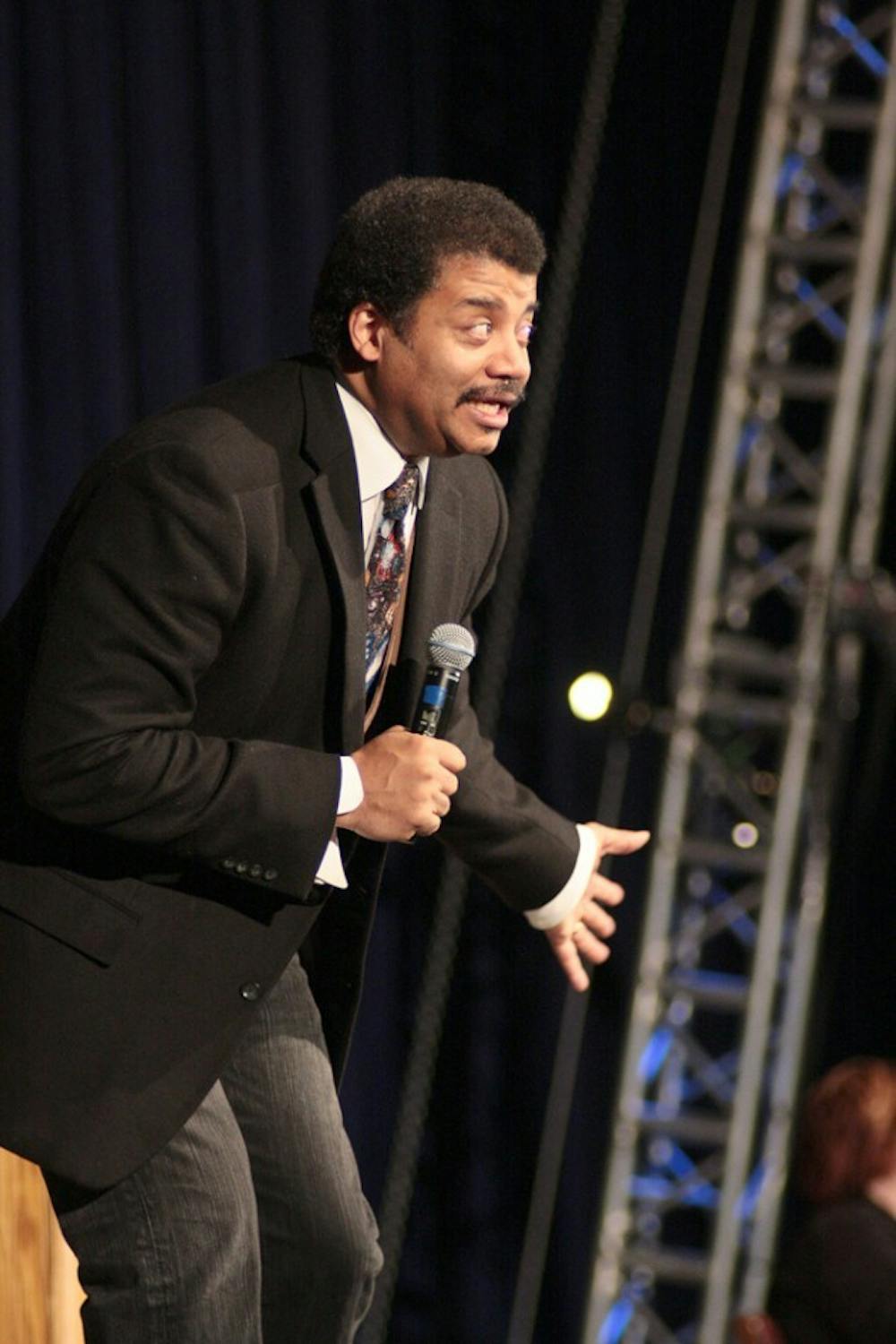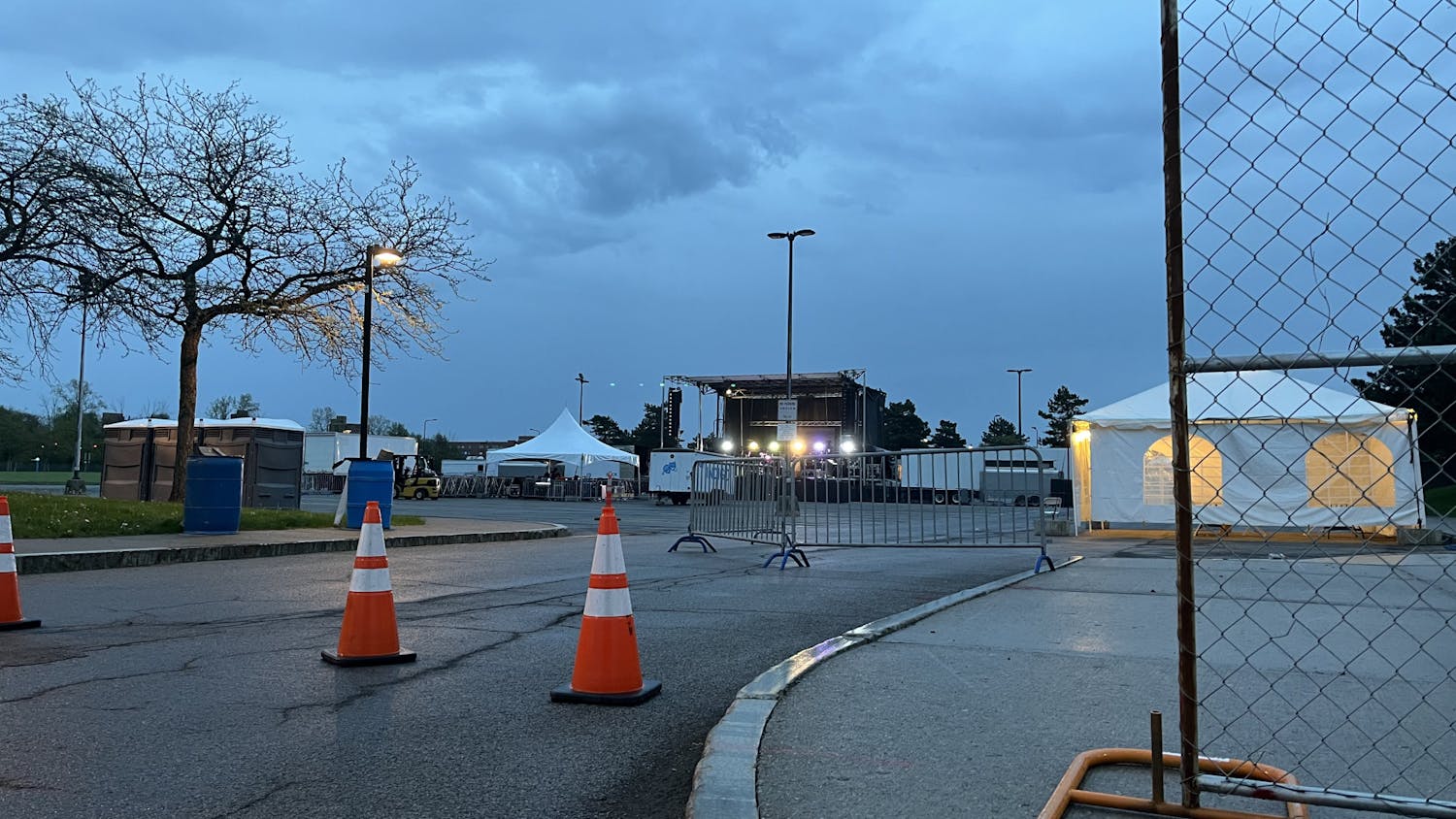The 23rd annual Distinguished Speakers Series continued Wednesday, featuring Neil deGrasse Tyson, whose accolades in astrophysics include demoting Pluto from being a planet, running the Hayden Planetarium in New York City and the host of NOVA scienceNOW.
Tyson started the speech by assuring his PowerPoint slides were working and said most people use these lectures to promote a new book.
"This is no exception," he said, putting a slide up of his most recent novels.
He then stated he needed to empty his pockets and as he was getting comfortable, the famed astrophysicist also took off his shoes.
He launched into his presentation by explaining the vast amount of stars in the universe and that our star, the sun, is just one tiny grain of sand on an entire beach.
Tyson explained the numbers scientists use to describe such large numbers – using scientific notations as their method. Starting with one, Tyson kept multiplying each number by 1,000.
"Drug dealers are not unfamiliar with 1,000, also known as kilos," Tyson said.
As he worked his way up to a billion he showed that McDonalds has claimed to sell over 99 billion hamburgers. To put it in relative terms, he explained, the amount sold could wrap around the earth 52 times, with enough left over to stack up to the moon.
As he continued to count up he reached the number one sextillion, which is a one, followed by 21 zeros.
"This number is ten times larger than all sounds or words ever uttered by all humans who have ever lived," Tyson said. "It is this number, that is the amount of stars in the observable universe."
Tyson went on to say that astrophysicists do not try to make the terms they use complicated and joked about other fields who use big and fancy words.
"In astrophysics, we tell it like it is," Tyson said. "When we find spots on the sun, we call them sunspots. If we find a big red star, we call it a Red Giant. You know what we call the rings around Saturn? Saturn's rings. We speak so we can understand it."
Tyson continued by talking about the origins of life by breaking down the elements found in the far reaches of the universe to the same elements within our own bodies.
Displaying a slide on the screen of some of the most common elements found in space, starting with hydrogen and going down in order, helium, oxygen, carbon and nitrogen.
He then showed a chart of the most common elements within the human body – an exact match.
"This is what I offer you," Tyson said. He was displaying a picture taken by the Hubble Space Telescope and requested the room to go completely dark. At first glance the picture looked like thousands of stars, but Tyson explained only three of the dots were.
The image on screen showed thousands of galaxies, from just one section of the universe, each containing hundreds of billions of their own stars.
"The ingredients of the universe are traceable to us, the ingredients to us are traceable to the universe, we are in this universe, the universe is in us," he said. The crowd was completely silent, and he paused for a moment.
"The number one thing we should all know about the universe – we are stardust."
E-mail: news@ubspectrum.com
Tyson explains life and the universe

More
Comments




